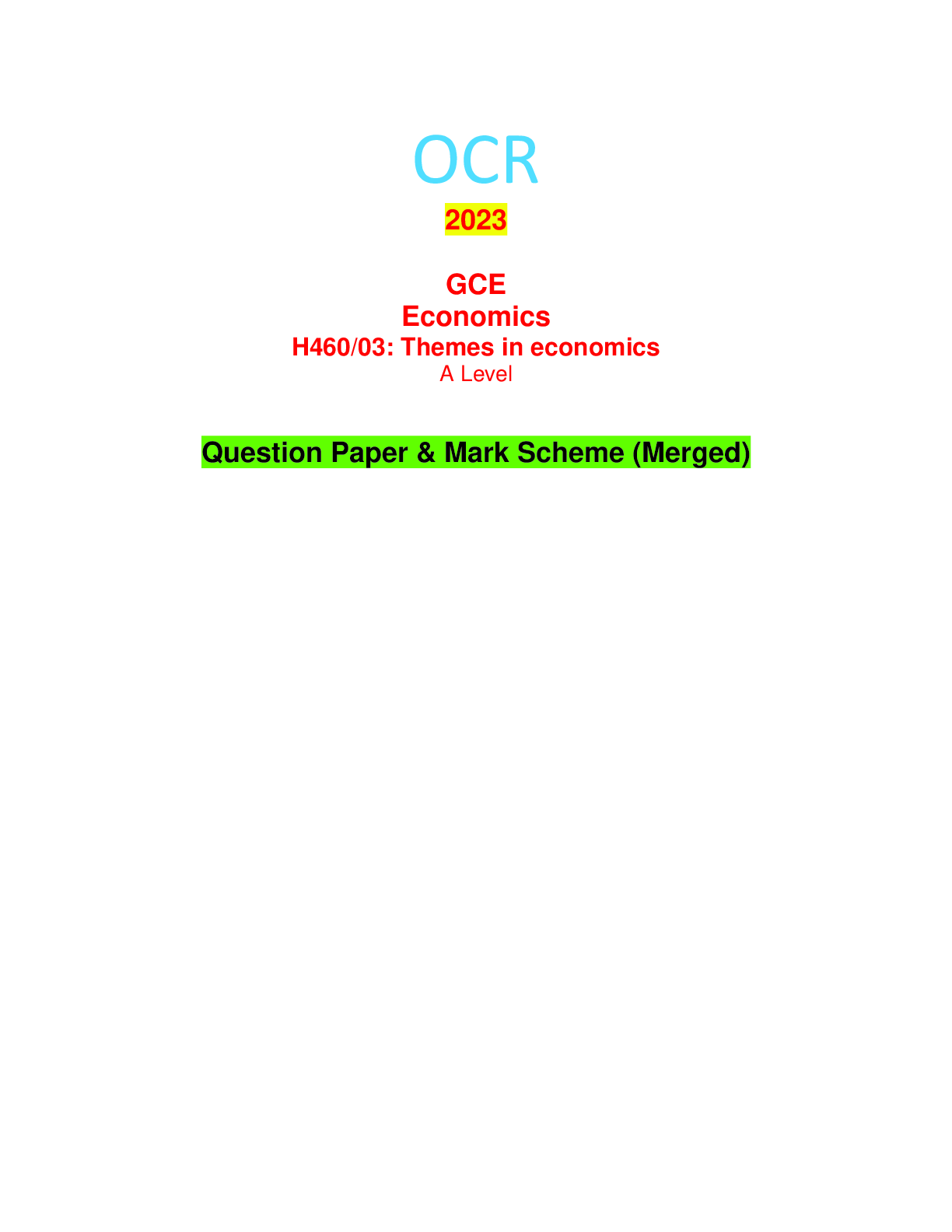Health Care > EXAM > PEARSON EDEXCEL GCE AS LEVEL IN ECONOMICS A (8EC0) MARK SCHEME (RESULTS) SUMMER 2019 (All)
PEARSON EDEXCEL GCE AS LEVEL IN ECONOMICS A (8EC0) MARK SCHEME (RESULTS) SUMMER 2019
Document Content and Description Below
PEARSON EDEXCEL GCE AS LEVEL IN ECONOMICS A (8EC0) MARK SCHEME (RESULTS) SUMMER 2019 Pearson Edexcel GCE AS Level in Economics A (8EC0) Paper 02 The UK economy: performance and policies Genera... l marking guidance • All candidates must receive the same treatment. Examiners must mark the last candidate in exactly the same way as they mark the first. • Mark schemes should be applied positively. Candidates must be rewarded for what they have shown they can do rather than be penalised for omissions. • Examiners should mark according to the mark scheme – not according to their perception of where the grade boundaries may lie. • All the marks on the mark scheme are designed to be awarded. Examiners should always award full marks if deserved, i.e. if the answer matches the mark scheme. Examiners should also be prepared to award zero marks if the candidate’s response is not worthy of credit according to the mark scheme. • Where some judgement is required, mark schemes will provide the principles by which marks will be awarded and exemplification/indicative content will not be exhaustive. • When examiners are in doubt regarding the application of the mark scheme to a candidate’s response, a senior examiner must be consulted before a mark is given. • Crossed-out work should be marked unless the candidate has replaced it with an alternative response. Question Number Answer Mark 1(a) Knowledge 1 Knowledge/understanding: 1 mark for definition, e.g. • Injection is money flowing into the circular flow of income/economy (1) • Comprises of investment, government spending and exports (1) • Injection in this context is government spending / investment (1) (1) Question Number Answer Mark 1(b) Application 2 Application: 1 mark for appropriate calculation, e.g. £44.1bn : £9.3bn (1) Answer = 4.7 or 4.74 Award 2 marks for correct answer Accept between 4.7 and 4.75 (2) Question Number Answer Mark 1(c) The only correct answer is D A is not correct because a decrease in the marginal propensity to save will increase value of the multiplier B is not correct because a decrease in the marginal propensity to tax will increase value of the multiplier C is not correct because an increase in the marginal propensity to consume will increase the value of the multiplier (1) Question Number Answer Mark 2(a) Knowledge 1 Knowledge: e.g. possible diagram (1) Question Number Answer Mark 2(b) Knowledge 2 Knowledge/understanding: 2 marks (1+1) for, e.g. • Equilibrium level of output can occur below the full employment level of output / the economy is not operating at full capacity/employment (1) • There is a negative output gap in the economy (1) • Award use of a LRAS diagram to illustrate spare capacity / the economy is operating at the elastic segment of LRAS (1) • Award the use of a PPF diagram to illustrate spare capacity / economy is operating inside the PPF (1) • Under-utilisation of the factors of production / the resources not being used to their full potential (1) so there is room to increase supply/output (1) (2) Question Number Answer Mark 2(c) The only correct answer is D A is not correct because changes in competition policy shifts the long-run AS B is not correct because changes in relative productivity shifts the long-run AS C is not correct because changes in the cost of raw materials shifts the short-run AS (1) Question Number Answer Mark 3(a) Knowledge 1, Application 1, Analysis 1 Knowledge/understanding: 1 mark for identifying one relevant factor, e.g. • Increased tax revenue/ lower welfare payments (1) • Increase in disposable income (1) • Less potential output will be lost (1) • Increase in consumption/AD/GDP (1) Application: 1 mark for reference to the chart, for e.g. • Unemployment rate has fallen (1) • Unemployment rate has decreased from nearly 8.3% in 2012 to around 4.3% in 2018 or has decreased by 4 percentage points (1) Analysis: 1 mark for linked development, e.g. • Budget deficit would decrease (1) • Confidence/consumption increase (1) • Less waste of scarce resources / fall in spare capacity (1) (3) Question Number Answer Mark 3(b) The only correct answer is A B is not correct because decrease in quantitative easing will reduce AD and increase the unemployment rate C is not correct because an increase in the government payments to the unemployed will reduce the incentive to work, reducing AS and increasing the unemployment rate (1) D is not correct because an increase in the UK base interest rate will increase the cost of borrowing, thus reducing AD and increasing the unemployment rate [Show More]
Last updated: 4 months ago
Preview 1 out of 17 pages
Instant download

Buy this document to get the full access instantly
Instant Download Access after purchase
Add to cartInstant download
Reviews( 0 )
Document information
Connected school, study & course
About the document
Uploaded On
Feb 17, 2024
Number of pages
17
Written in
Additional information
This document has been written for:
Uploaded
Feb 17, 2024
Downloads
0
Views
19

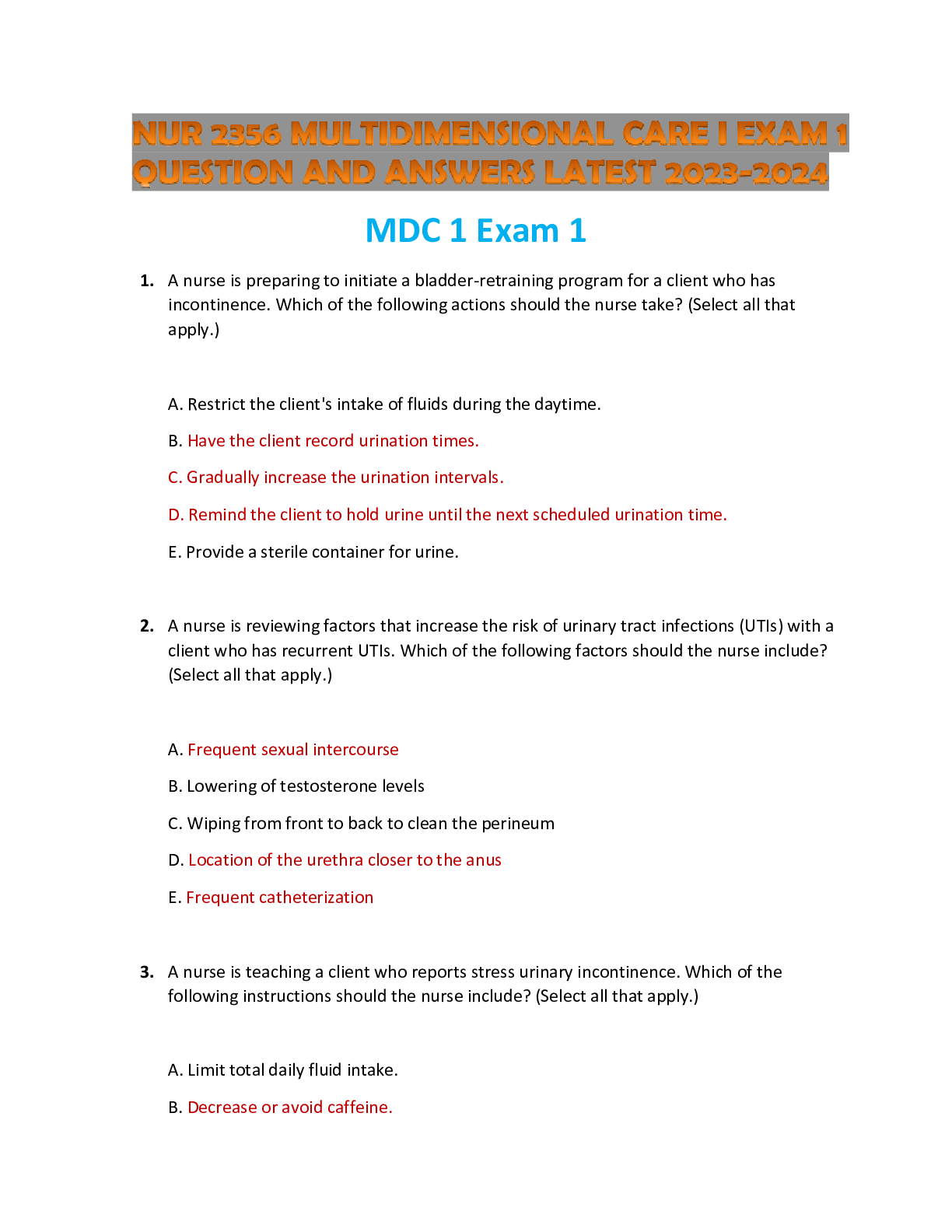

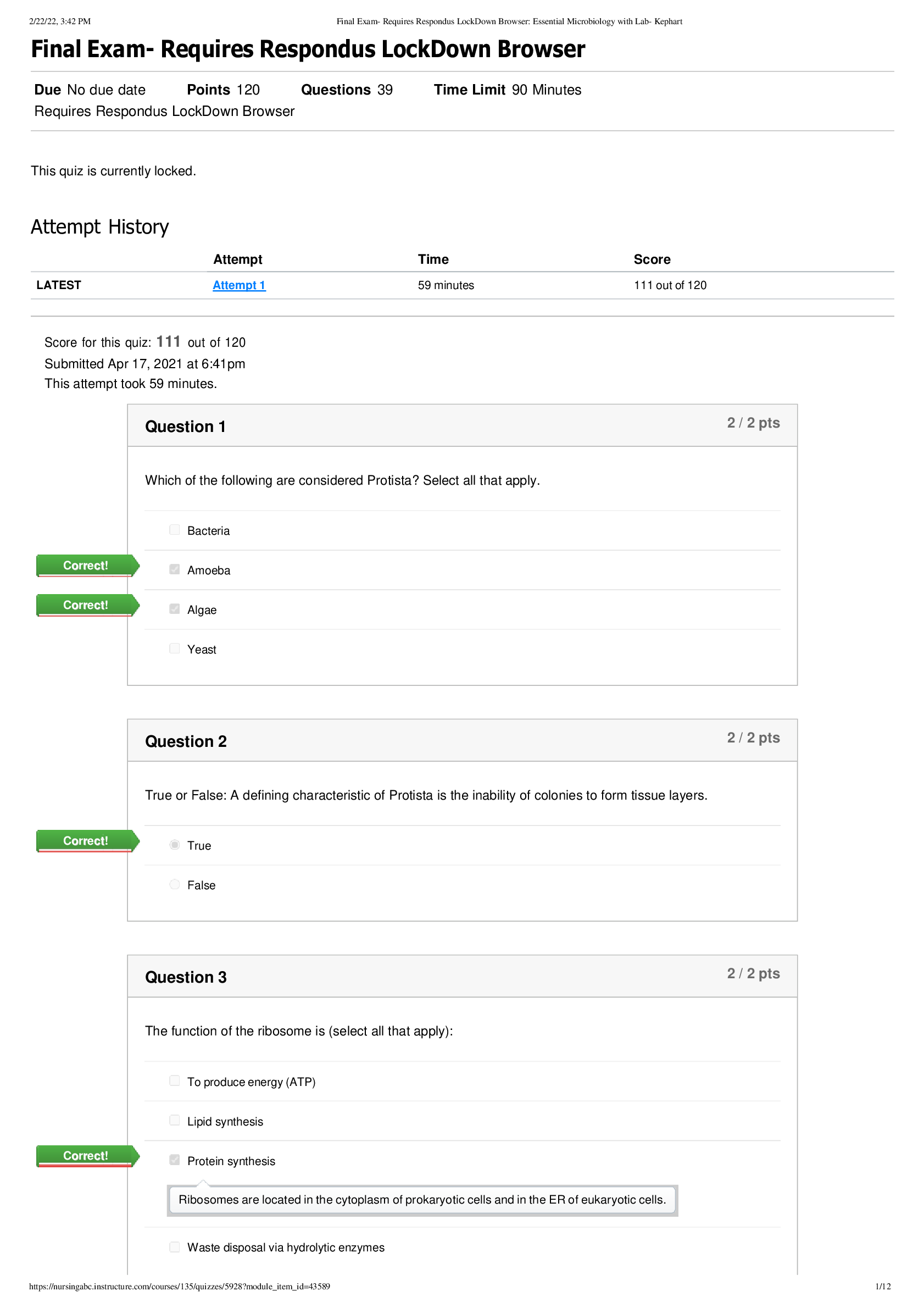


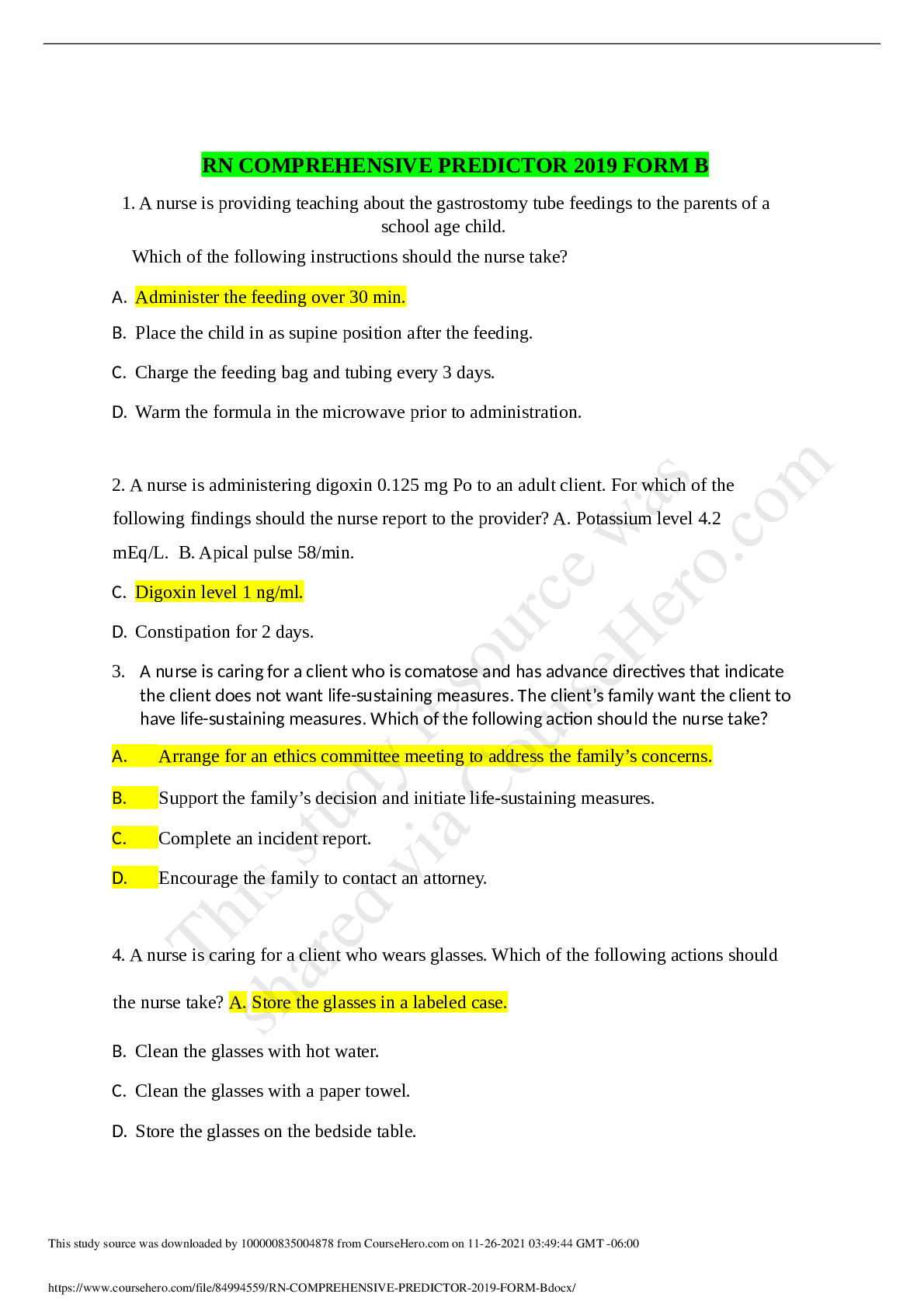
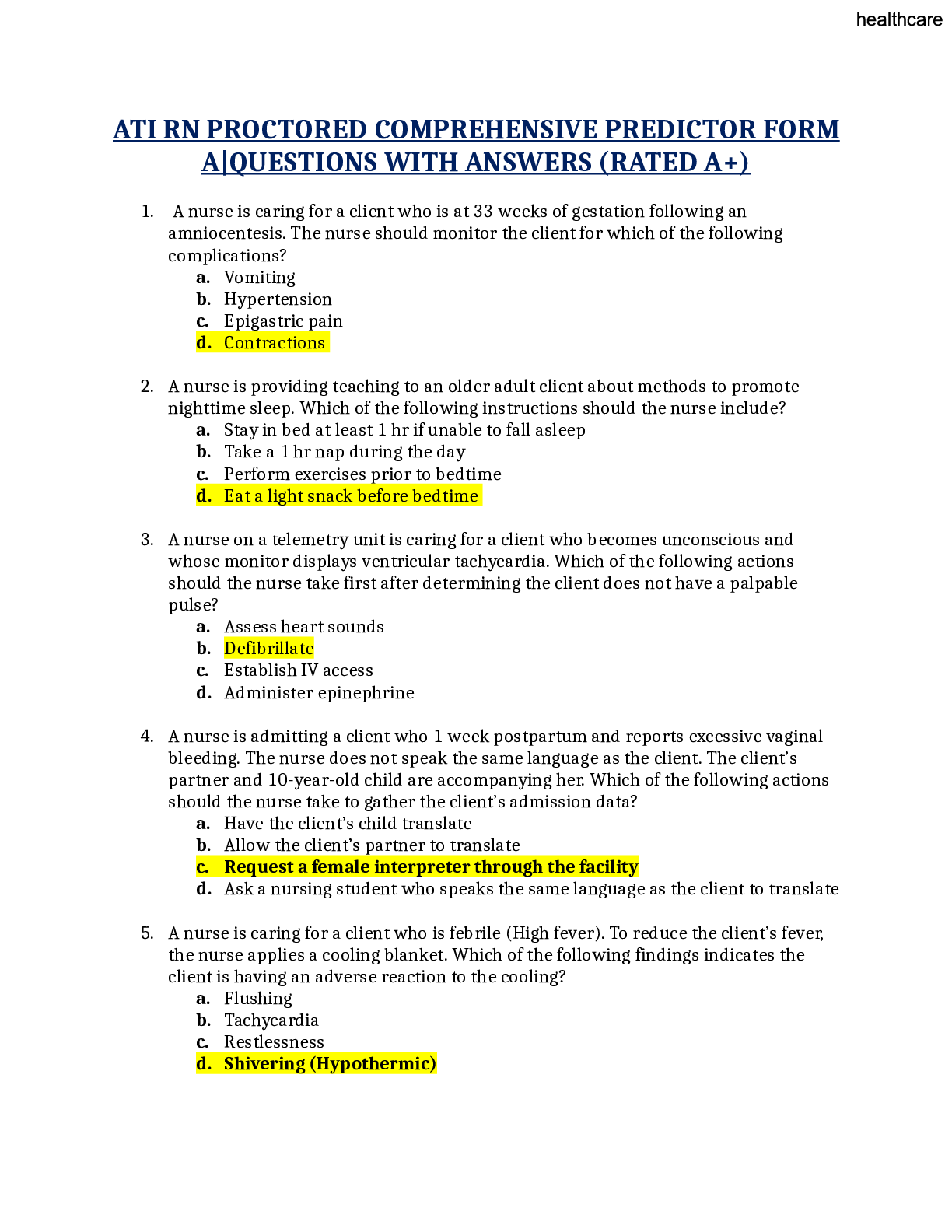
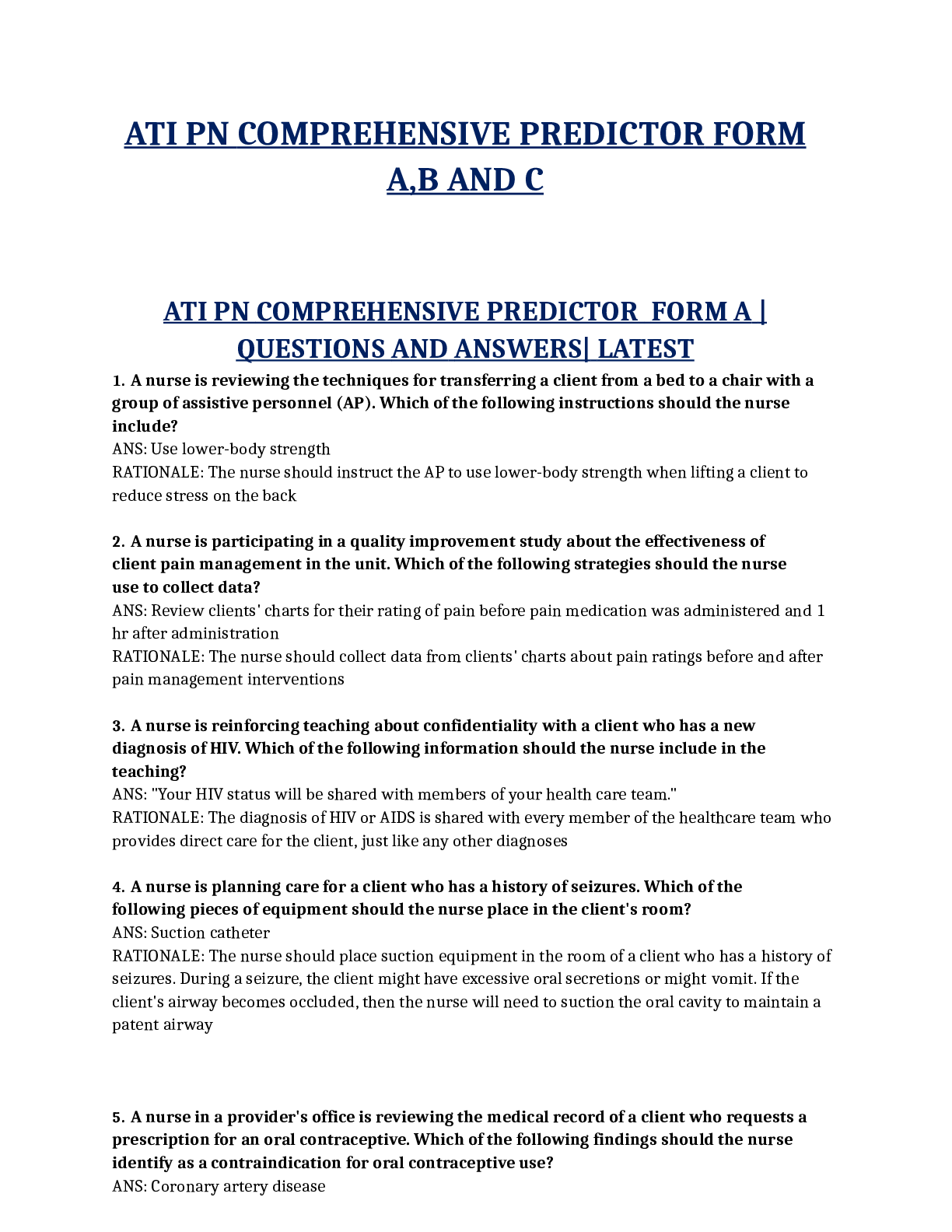




.png)
.png)
.png)
 (1).png)

